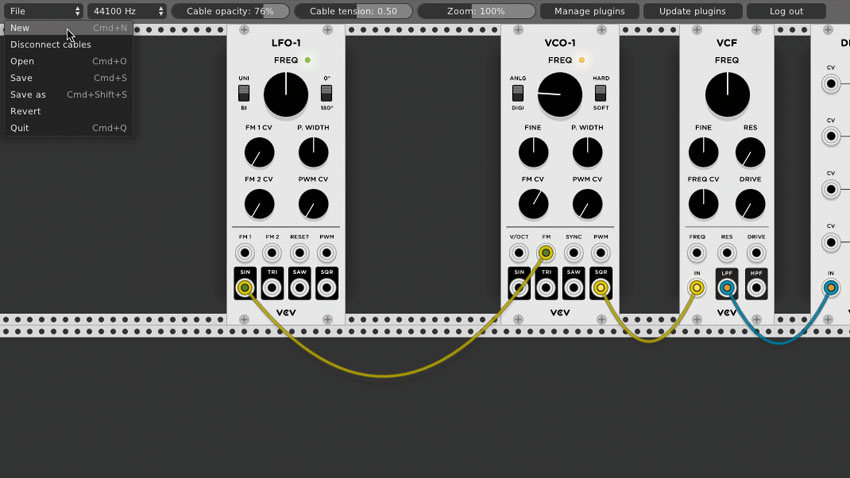How to build a wavetable synth voice for free in VCV Rack
Modular synthesis is mainly associated with analogue tones, but work some digital techniques into your patches and things can get a whole lot more interesting…
The first wave of modular synthesizers were all but a distant memory when Wolfgang Palm’s PPG Wave series of hybrid synthesizers arrived in the 80s, deftly blending digital wavetables with analogue filters and amplifiers.
Eventually, of course, musicians grew bored with menu diving and preset patches, and rediscovered the hands-on allure of analogue modulars. However, they hadn't forgotten the crystalline highs and biting basses of digital oscillators. In fact, today’s synthesist knows full well that combining digital waveforms with analogue filters and real-time CV control offers up an exciting palette for the creation of new tone colours.
In this walkthrough, we'll show you how to employ a wavetable oscillator in the amazing free VCV Rack software modular. For more on using VCV Rack, pick up the September 2018 edition of Computer Music.

Step 1: Let’s build a PPG-style wavetable synth voice in VCV Rack. The idea behind wavetables is simple: a number of single-cycle waveforms are strung together end-to-end to form a single digital audio file. The oscillator can instantly call upon any waveform in the ‘wavetable’, or modulate through them. We’ll start by going to File and creating a New empty rack.

Step 2: We’ll need a MIDI controller to hear what we’re doing. Right-click in the empty rack, go to the Core category and choose MIDI-1 and Audio modules. Once they appear, select the correct interface for each. Next, instantiate an Audible Instruments Macro Oscillator. This is a multi-purpose digital module based on a design by Mutable Instruments.

Step 3: Right-click into Fundamental modules and grab a VCF, an ADSR and a VCA. We’ll also nab a Delay for sweetening. Connect the MIDI module’s CV Out to the Oscillator’s V/OCT In jack for pitch control, and the MIDI module’s Gate Out to the ADSR’s Gate In. Route the Oscillator’s Out to the VCF’s In. The VCF’s LPF goes to the top VCA In.

Step 4: The VCA’s top Out goes to the Delay’s In, and the Delay’s Out goes to Inputs 1 and 2 on the Audio module. The ADSR’s Out goes to the VCA’s LIN jack. We can now play a sound. Crank up the VCF’s Freq for now. Scroll the Macro Osc’s Edit knob until the display says WTBL. You should hear a decidedly digital bell-like timbre.
Want all the hottest music and gear news, reviews, deals, features and more, direct to your inbox? Sign up here.

Step 5: The Color knob is used to select the wave in the wavetable. Give it a twist, then set it fully anti-clockwise. What if we modulate that knob? Call up another ADSR and connect its In jack to the MIDI module’s Gate output. Patch the ADSR’s Out to the Color input on the Macro Oscillator.

Step 6: Tweak the ADSR to push Color into action. Turn the Attack all the way down, and both Decay and Release to about 2 o’clock. Sustain will be at 10 o’clock. Now, if we play and hold a note, the wavetable sweeps through its waves for a classic PPG sound. Modulate the VCF with the same ADSR and tweak the patch to taste.
Computer Music magazine is the world’s best selling publication dedicated solely to making great music with your Mac or PC computer. Each issue it brings its lucky readers the best in cutting-edge tutorials, need-to-know, expert software reviews and even all the tools you actually need to make great music today, courtesy of our legendary CM Plugin Suite.
